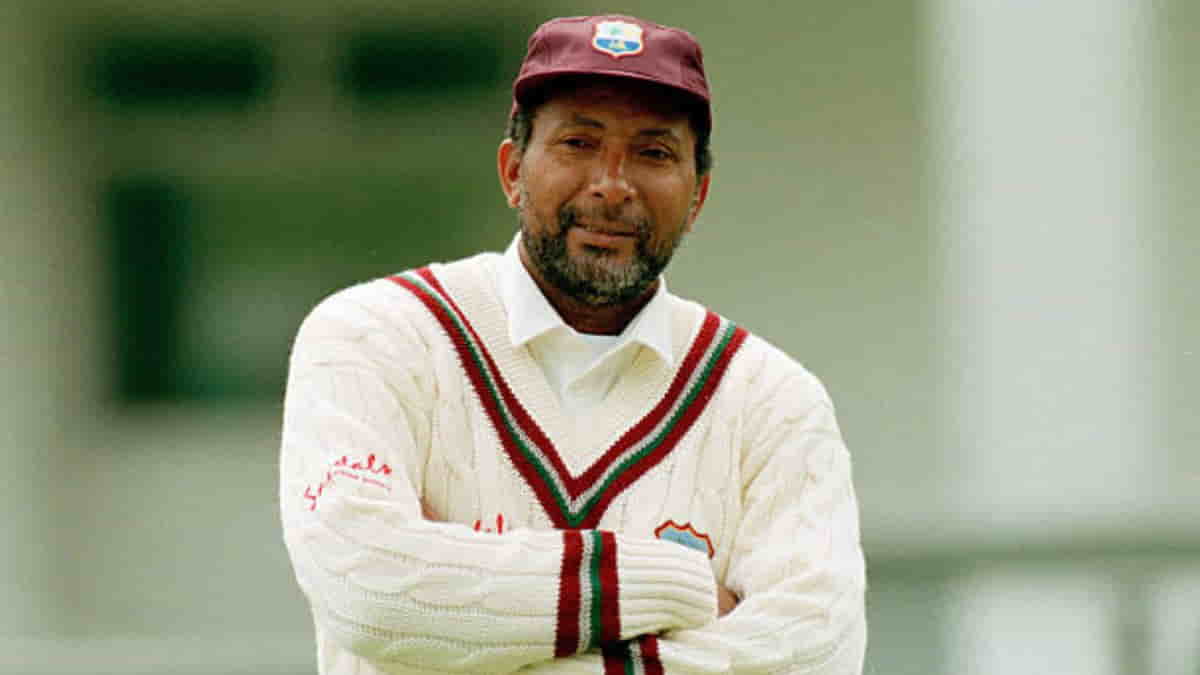 Image Credit: twitter.com/@windiescricket
Image Credit: twitter.com/@windiescricket
Many “contained” spells that have helped some spectacular victories have occurred in the one-day international format. In a limited-overs format, when batsmen are constantly looking for runs, it might be difficult to stop the scoring.
Men’s cricket’s One Day International (ODI) tournament is known as the Cricket World Cup. Since the first Cricket World Cup in England, which was hosted by the International Cricket Council (ICC), the competition has been conducted every four years. Although the ICC stated an interest in changing the format in response to criticism of the 2007 World Cup, the number of teams and matches have increased since that time.
Best Economy Rates in Bowling Records: ICC Men’s World Cup:
| Economy rates | Player | Matches | Wickets | Runs | Overs | Span |
|---|---|---|---|---|---|---|
| 3.24 | Andy Roberts | 16 | 26 | 552 | 170.1 | 1975–1983 |
| 3.43 | Ian Botham | 22 | 30 | 762 | 222.0 | 1979–1992 |
| 3.52 | Gavin Larsen | 19 | 18 | 599 | 170.0 | 1992-1999 |
| 3.57 | John Traicos | 20 | 16 | 673 | 188.0 | 1983-1992 |
| 3.60 | Shaun Pollock | 31 | 31 | 970 | 269.0 | 1996–2007 |
Andy Roberts
lethal and deadpan with the exception of a gunslinger’s narrowing of the eyes, there would be no sign of emotion, boundary or wickedness. Andy Roberts suppressed his feelings. Underneath the surface, though, was a clever cricketer with a fertile mind who was strategizing and planning the assassination of batters as though it were a military operation.
He was the founder of the contemporary West Indian game that relies heavily on fast bowlers and has done so admirably for the past 25 years. This bowler had forced from enormous shoulders and velocity that came from the timing.
Ian Botham
Ian Botham was not only the best English cricketer of the 1980s but also the sport’s most well-known figure. He commanded numerous newspaper headlines as his career climbed to unbelievable heights and bottomless depths in an era of understated footballers, before to Paul Gascoigne and David Beckham. After being promoted from Somerset to make his England debut in 1977, he was unquestionably the nation’s top all-rounder after one year. Three years later, he was named captain. Four years later, he resigned (a minute before being fired), his form in shambles.
Following that, the most illustrious few weeks in English cricket history began when Botham, while serving as captain under Mike Brearley, guided England to an astounding Ashes victory with three performances—two with the bat and one with the ball—of magical genius.
Gavin Larsen
Gavin Larsen played 121 matches and was a member of three teams that won consecutive World Cups, making his name associated with one-day internationals in New Zealand. When New Zealand advanced to the semi-finals of the 1992 World Cup on home soil, ‘The Postman’ (he always delivered) earned a reputation as a miserly one-day bowler. He was a member of the trio known as the ‘dibbly-dobbly-wibbly-wobbly’ together with Chris Harris and Willy Watson. He gave up just 3.46 runs per over while New Zealand advanced to another semi-final at the 1999 World Cup in England. Due to an injury, he ended his international career after that competition and entered the business world, working for one of New Zealand Cricket’s key sponsors. Since then, he has held other positions, including CEO, and is a member of the 2015 World Cup organizing committee.
John Traicos
One of the most unique players in international cricket, John Traicos is a disciplined and accurate offspinner. He played in Zimbabwe’s first four Test matches when he returned to international cricket in 1992 at the age of 45. He made his Test debut for South Africa in the final series they played before being forced into sporting exile in 1969–1970. The interval of 22 years and 222 days between appearances is a record. He was born in Egypt, raised in South Africa, and later played for Rhodesia/Zimbabwe at a period when many of his contemporaries were making their living abroad.
In 1967, he toured England with South African Universities. Traicos was still by far the best offspinner in the nation and one of the best in the world when Zimbabwe was finally welcomed to the fold in 1992, despite his advanced age. John Traicos is one of the world And many people half his age would have been ashamed of the quickness of his responses when fielding in the ditch. He finished with 5 for 86 in 50 overs in Zimbabwe’s opening Test. When he was unable to tour Pakistan in 1993–1994 due to professional obligations, his international career came to an end. Traicos, an Australian corporate secretary, left Zimbabwe in 1997 with his family for political concerns. Chloe, his daughter, is a performer.
Shaun Pollock
Shaun Pollock should have become an international cricket player, and a very good one at that, given the types of traits that were present in his gene pool. Dad Through the 1960s, Peter led the South African attack, and Uncle Graeme was one of the game’s best left-handers, if not the best. Although Shaun has qualities from both, he has distinguished himself as a seamer with perfect, Hadlee-like line and length. He was, however, smooth and aggressive in the early stages of his first-class career, and his Natal teammates took great pride in keeping track of how many batters he pinned in each and every game. He was included in the South African Test team against the wishes of Michael Atherton.t the wishes of Michael Atherton.




